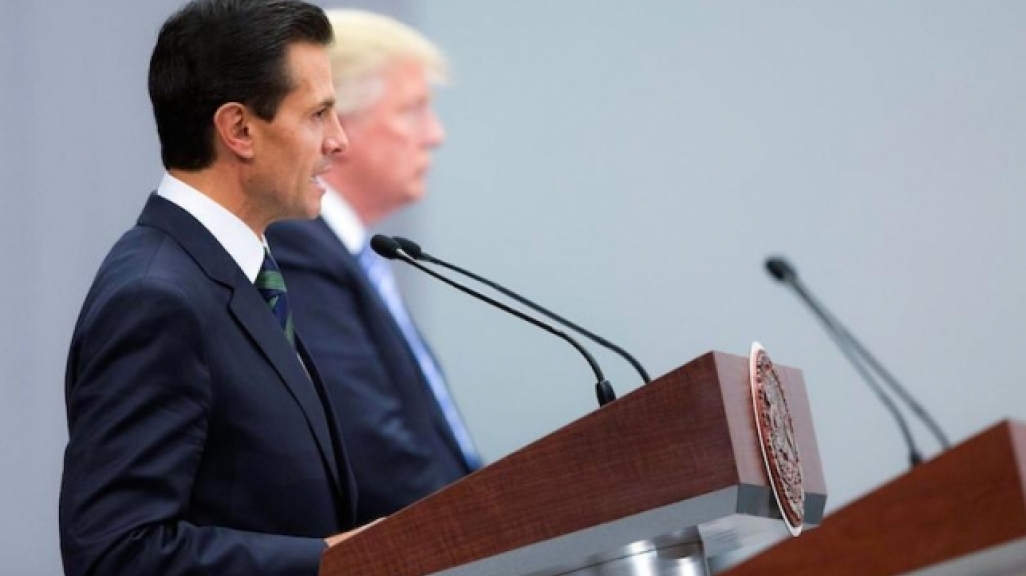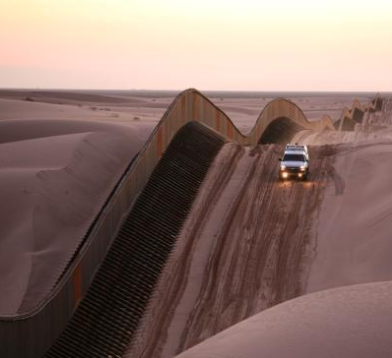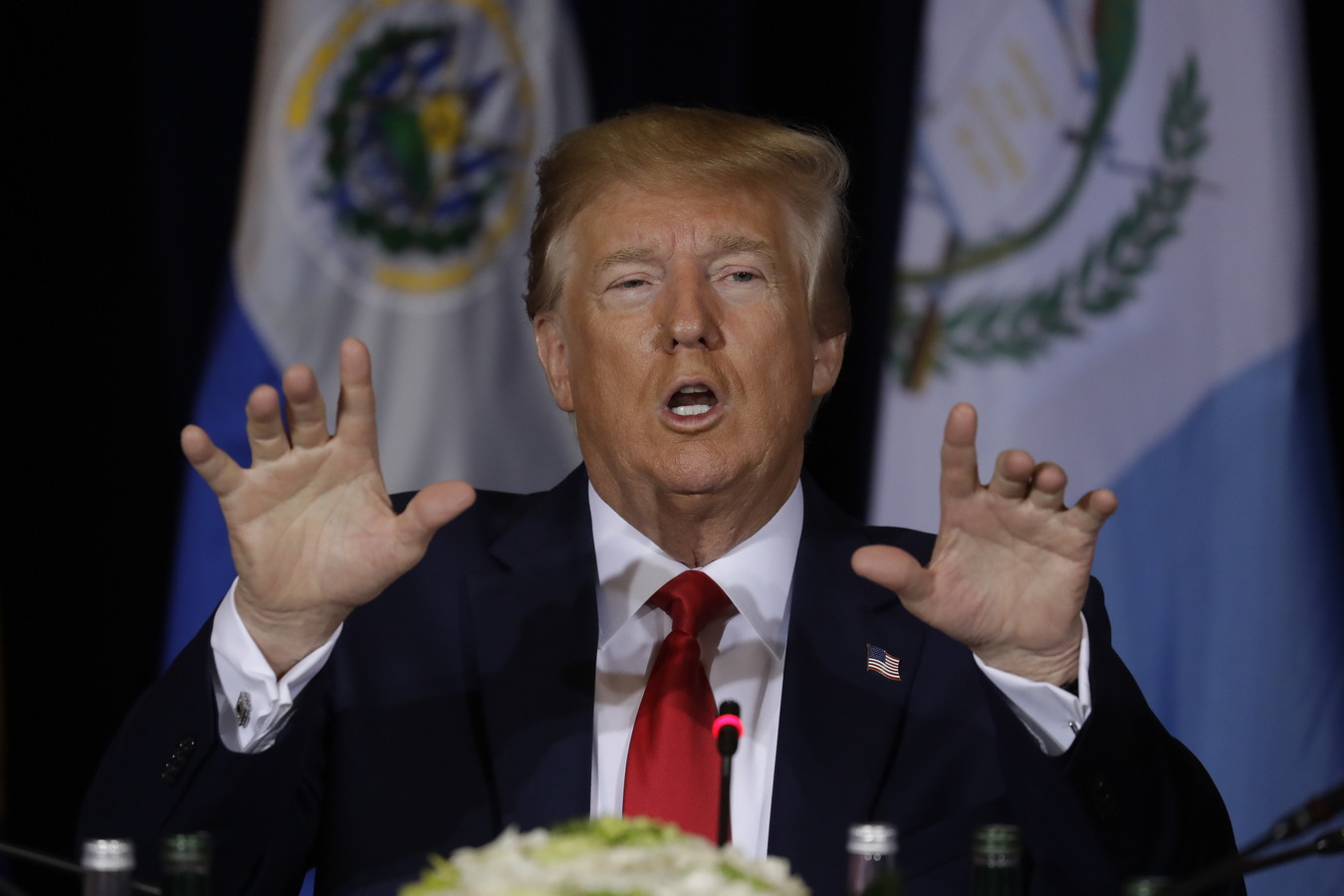What's at Stake in Peña Nieto's Washington Visit
What's at Stake in Peña Nieto's Washington Visit
Ahead of Enrique Peña Nieto's visit, Mexico's top cabinet members meet with senior White House officials this week—just as Donald Trump announces a border wall.
Updated January 25, 2017—Days into taking over the Oval Office, U.S. President Donald Trump began making good on campaign promises that had been met with a sense of dread in Mexico. On Monday, he pulled the United States out of the Trans-Pacific Partnership (TPP), a day after he said he said he would pursue the renegotiation of the North American Free Trade Agreement (NAFTA) between Canada, Mexico, and the United States. On Tuesday night, he revealed via Twitter that on Wednesday—the same day that Mexico’s foreign relations and economy secretaries are slated to meet with senior White House officials—he would sign an executive order to build a border wall.
The secretaries’ visit to Washington is intended to lay the groundwork for Mexican President Enrique Peña Nieto’s January 31 trip to meet with Trump. NAFTA is expected to be a main agenda item, given that Trump called it the “worst trade deal ever” before getting elected and repeatedly pledged to either pull the United States out of it or renegotiate it. Mexico’s Economy Secretary Ildefonso Guajardo previously said that his country was open to modernizing the 23-year-old deal and that TPP offered the means to do so. But, in an interview on Tuesday, Guajardo suggested that, depending on how talks go, Mexico itself might leave the accord. “If there aren’t clear benefits…there’s no reason to stay,” he said.
There’s much at stake with tweaking the deal: the United States trades $1 trillion a year with its NAFTA counterparts. But there have already been indications from the Trump administration that Canada has a “very special status” and that Mexico, with which the United States ran a trade deficit of $59 billion last year, is the target of new NAFTA talks. Canadian Prime Minister Justin Trudeau indicated Tuesday that Mexico is on its own in this fight, saying: “We love our Mexican friends. But our national interests come first and the friendship comes second.”
Here we take a look at Mexican officials’ January trips to Washington.
1. The big meeting: Peña Nieto meets with Trump on January 31.
It’s been a rocky few months for Mexico’s economy. Trump’s comments about trade, immigration, and the border wall—not to mention threats against automakers planning to open plants in Mexico—caused the peso to hit record lows against the dollar, while stoking anxieties about lost jobs. Given the perceived insult of Trump ordering border wall construction on the same day as a visit from Mexican officials, many Mexicans say Peña Nieto—who faces plummeting approval ratings—should cancel his trip entirely. So one might ask: why would the Mexican president rush to meet with someone who frequently attacked his country and its people on the campaign trail?
For one, it’s tradition: the Mexican president and Canadian prime minister are typically the first heads of state with whom incoming or new U.S. presidents meet. Trudeau is slated to meet with Trump “soon,” but no date has been set.)
Second, Peña Nieto has his own list of agenda topics to raise with Trump. On January 23, he outlined five guiding principles for negotiations with the United States, with Mexican national sovereignty at the top of the list, echoing the Trump administration’s “America First” principle. The Mexican president also listed 10 goals for talks with the Trump government.
The Mexican leader laid out the goals as part of an announcement on the country’s foreign policy goals. Aside from recalibrated plans for dialogue with the United States, Peña Nieto talked about Mexico’s role in the world, with a stated priority of seeking partnerships to increase commerce and investment on a global scale, including bilateral accords with TPP members, collaboration with Central America, closer ties with Argentina and Brazil, ongoing work with Pacific Alliance partners, and trade with the European Union and United Kingdom. Mexico sent just over 81 percent of its exports to the United States in 2015, down from just below 88 percent a decade earlier.
Peña Nieto’s Washington visit won’t mark his first meeting with Trump. The U.S. president traveled to Mexico City while still a candidate in August 2016 in a meeting that most Mexicans viewed negatively, given Trump’s criticisms of the country while on the campaign trail. While Trump said during the press conference that the two did not discuss payment of a wall in their private meeting just prior, Peña Nieto took to Twitter later that afternoon to say that he’d indeed told Trump privately that Mexico would “never” pay for a wall, leading to some back and forth between the two on the issue on the social media platform.
The Mexican president’s structured January 23 remarks may partially be about trying to ensure clarity ahead of the next time the two presidents meet, with The New York Times calling it “the most comprehensive explanation of Mexico’s foreign policy aspirations in recent months.” During Monday’s address, Peña Nieto said Mexico doesn’t support walls. “Our country believes in bridges,” he said.
2. The prequel: Mexico’s foreign relations and economy secretaries head to Washington on January 25 and 26.
Before Peña Nieto visits Washington, Mexican Secretary of Foreign Affairs Luis Videgaray, along with Guajardo, will meet with senior White House officials to lay the groundwork on January 25 and 26. Videgaray said the initial meeting will not result in concrete decisions and, instead, count as “the first dialogues.”
Videgaray, a close advisor to Peña Nieto, previously served as finance secretary and, while in that position, orchestrated Trump’s August trip to Mexico. He stepped down in September following public discontent over the visit but was appointed to the foreign secretary post at the beginning of January. Trump has tweeted that Videgaray was a “brilliant finance minister and wonderful man.”
In light of Guajardo’s comments that Mexico could leave NAFTA, Videgaray also said such a move would be an option, but that it wouldn’t be a first choice, given that millions of Mexican jobs depend on free trade with the United States.










